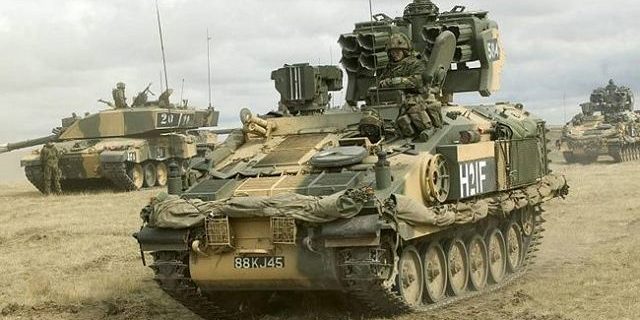Quick Facts
| Variants |
Starstreak Mark II Lightweight Multiple Launcher (LML) Seastreak Self-Propelled, High Velocity Missile (SP HVM) Starstreak Avenger Thor/Multi-Mission System (MMS) |
| Role and Mobility | Short-Range Air Defense; Man-Portable or Vehicle-Mounted |
| Interceptors and Range |
Starstreak Missile Range: 0.3-7 km Speed: Mach 4
Starstreak Mark II Missile Range: 7+ km Speed: Mach 4 |
| Sensors | CONTROLMaster 200 Radar |
| Targets | Fast Moving Aircraft |
| Status/Exports | Operational; United Kingdom, South Africa, Thailand, Indonesia, and Malaysia |
| Designer/Producer | Thales Air Defence |
Overview
The Starstreak missile was designed in the United Kingdom to supplement the Rapier missile system in 1984. It is a short-range surface-to-air missile (SAM) and is originally man-portable. Traveling at speeds greater than Mach 4, it is the world’s fastest short-range SAM.
There are several variations of the Starstreak Missile System:
Starstreak: The original missile system
Starstreak Mark II: Upgraded version of the Starstreak with increased range, coverage, altitude, and improved guidance precision against small targets[i]
LML: Lightweight multiple launcher, capable of being mounted on any light-wheeled vehicle, can engage three targets without reloading[ii]
Seastreak: Two versions of the Starstreak missile system designed to be mounted on a naval ship[iii]
SP HVM: 12 Starstreak missiles mounted on a tracked Stormer vehicle, roof-mounted air defense alerting device with infrared scanner for target detection and prioritization, automatically slews weapon sight on target[iv]
Starstreak Avenger: Starstreak variant designed for US Army’s Boeing Avenger[v]
THOR/Multi-Mission System: A four-missile turret mounted on a 6X6 Pinzgauer vehicle[vi]
Strategic Implications
As the fastest short-range surface-to-air missile, traveling at Mach 4, the Starstreak can intercept targets quicker than any other system. This can be valuable at short -range, where there is less time to act and speed becomes critical. The six variations of the Starstreak missile provide countries the ability to choose whatever system best fits their needs.
Timeline
January 2014: Indonesian Ministry of Defence awarded a contract to Thales UK for Starstreak missiles
September 2007: Development of Starstreak Mark II[vii]
2005: THOR/MMS variant unveiled
December 2002: South Africa ordered eight Starstreak LMLs for its Army[viii]
2000: LML and man-portable types of Starstreak HVM are made operational[ix]
November 1998: successful first test firing of ATASK while airborne[x]
September 1997: The Starstreak is put into service by the UK
1984: Development of the Starstreak Missile System begins
Recent News
References
[i] https://www.thalesgroup.com/en/worldwide/defence/starstreak-ii
[ii] https://www.army-technology.com/projects/starstreak/
[iii] http://www.armyrecognition.com/british_united_kingdom_missile_systems_vehicles_uk/starstreak_hvm_high_velocity_short-range_surface-to-air_missile_manpads_technical_data_sheet_picture.html
[iv] https://www.army-technology.com/projects/starstreak/
[v] http://www.armyrecognition.com/british_united_kingdom_missile_systems_vehicles_uk/starstreak_hvm_high_velocity_short-range_surface-to-air_missile_manpads_technical_data_sheet_picture.html
[vi] http://www.armyrecognition.com/british_united_kingdom_missile_systems_vehicles_uk/starstreak_hvm_high_velocity_short-range_surface-to-air_missile_manpads_technical_data_sheet_picture.html
[vii] https://www.army-technology.com/projects/starstreak/
[viii] https://www.army-technology.com/projects/starstreak/
[ix] https://www.copybook.com/fact-files/starstreak-missile-system

